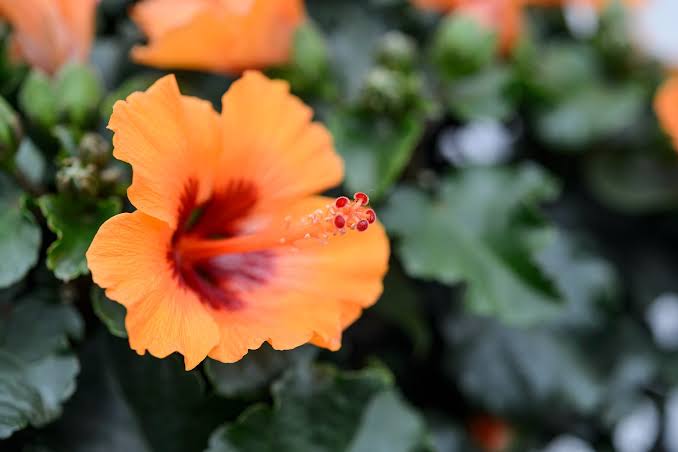Hibiscus flowers have long captured hearts around the world with their striking colors and versatile uses. Known for their tropical charm, these blooms are more than just ornamental—they hold cultural, culinary, and health significance that stretches across generations. From soothing teas to vibrant garden displays, hibiscus has proven its adaptability time and again.This is where the phrase “🥘 Classic or creative: hibiscus flowers works both ways!” truly shines. Whether you love time-tested traditions or prefer experimenting with modern twists, hibiscus flowers can satisfy both. In this article, we’ll explore how hibiscus fits beautifully into classic traditions while offering endless creative opportunities, giving you ideas to enjoy this flower in new and exciting ways.H2: The Classic Side of HibiscusH3: Traditional Tea with a Twist of HistoryHibiscus tea, also known as sorrel or agua de jamaica depending on the region, has been enjoyed for centuries. This ruby-red infusion is slightly tart, refreshing, and packed with vitamin C. In many cultures—from Egypt to the Caribbean—hibiscus tea plays an important role in celebrations and daily wellness.H3: Herbal and Medicinal UsesHibiscus flowers have been used in classic herbal medicine to:Support heart health by helping lower blood pressure.Aid digestion and reduce bloating.Provide antioxidants that fight free radicals.For those who love timeless remedies, hibiscus remains a cornerstone of natural healing—proving that 🥘 Classic or creative: hibiscus flowers works both ways!H3: Decorative EleganceClassic gardeners adore hibiscus for its ability to bring vibrant colors to outdoor spaces. With bold reds, yellows, and pinks, the blooms are staples in tropical and subtropical gardens across the United States, United Kingdom, and Canada (especially in containers and greenhouses for cooler climates).H2: The Creative Side of HibiscusH3: Modern Culinary AdventuresHibiscus isn’t just for tea anymore. Chefs and home cooks are experimenting with hibiscus petals to craft unique dishes:Hibiscus Syrup: Adds a floral tang to cocktails, mocktails, and lemonades.Hibiscus Desserts: Infused into cakes, macarons, or sorbets for a stunning color and flavor boost.Savory Pairings: Used in marinades or reductions to balance rich meats like duck or pork.This culinary creativity shows how 🥘 Classic or creative: hibiscus flowers works both ways!—bridging cultural heritage and innovative gastronomy.H3: Skincare and BeautyIn modern beauty, hibiscus is known as the “Botox plant.” Its natural acids exfoliate gently, while antioxidants support youthful skin. From homemade masks to luxury serums, hibiscus has become a sought-after ingredient for those who prefer creative self-care routines.H3: Crafts and DIY DécorBeyond the kitchen and garden, hibiscus inspires creativity in craft projects:Pressed Flower Art: Turn dried hibiscus into bookmarks or framed art.Homemade Candles and Potpourri: Hibiscus adds color and fragrance.Natural Dyeing: Hibiscus petals produce a gorgeous range of pinks and purples, perfect for fabric projects.H2: Practical Tips for Using HibiscusH3: Choosing the Right VarietyNot all hibiscus plants are the same. Two main types dominate:Hibiscus sabdariffa: Best for culinary use (teas, syrups, jams).Hibiscus rosa-sinensis: Grown primarily for ornamental beauty.When selecting hibiscus for your needs, ensure you know the variety and intended purpose.H3: Growing Hibiscus at HomeClimate Needs: Hibiscus thrives in warmth, but in the UK and Canada, container growing allows for seasonal movement indoors.Soil and Sunlight: Prefers well-draining soil and at least six hours of sun daily.Watering: Keep the soil moist but not waterlogged.H3: Harvesting Hibiscus FlowersPick fresh blooms in the morning when they’re most vibrant.Dry petals in a shaded, airy space for tea or craft projects.Store in airtight jars away from light and moisture.H2: Classic vs. Creative: Bringing It TogetherHibiscus doesn’t force you to choose between tradition and innovation. Instead, it celebrates both:Classic: Brew a soothing hibiscus tea steeped in history.Creative: Transform those same petals into a vibrant cocktail syrup.Classic: Plant hibiscus for timeless beauty in your garden.Creative: Use the dried blooms to create unique pressed art.This perfect balance is why we say, 🥘 Classic or creative: hibiscus flowers works both ways!H2: Fun Ways to Try Hibiscus TodayHere are some simple ways to enjoy hibiscus, whether you lean classic or creative:DIY Hibiscus Iced Tea: Add orange slices and mint for a summer refresher.Hibiscus Jelly: Spread on toast or pair with cheese for a sweet-savory snack.Floral Cocktails: Mix hibiscus syrup with sparkling wine or soda water.Homemade Face Mask: Combine hibiscus powder with honey and yogurt.Table Décor: Float hibiscus blooms in a bowl of water as a centerpiece.ConclusionHibiscus flowers prove that you don’t need to choose between tradition and innovation. With roots in centuries-old remedies and ceremonies, as well as a blossoming role in modern cuisine, skincare, and décor, hibiscus embodies versatility and timeless appeal.Whether you’re sipping a cup of soothing tea, crafting a floral dessert, or decorating your home with vivid blooms, hibiscus offers something for everyone. That’s why the idea of “🥘 Classic or creative: hibiscus flowers works both ways!” resonates so strongly—it captures the beauty of blending old and new, heritage and creativity, simplicity and sophistication.So, the next time you encounter these stunning blooms, think beyond the ordinary. From classic to creative, hibiscus truly does work both ways.

